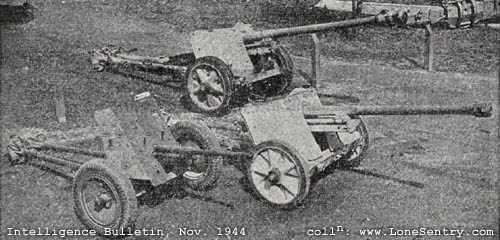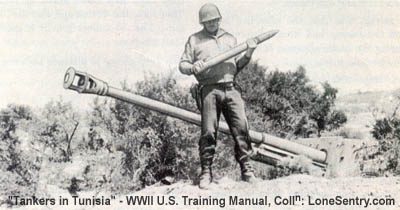
Wartgamer
-
Posts
939 -
Joined
-
Last visited
Never
Posts posted by Wartgamer
-
-
My point is that the present system, given the non-recrewing of guns, is an acceptable abstraction. Testing proves it out also.
I have also said that IF CMx2 DOES have recrewing, then a better modeling of HE needs to be implemented. Including fusing of HE shells.
If ANYTHING, modeling the realities of HE delay fuses, with the potential of skipping the rounds, INCREASES the size of the crew target AND also the possibility of striking the gun phsically.
The gun was not targeted under most battlefield conditions and ranges. The crew was.
-
yeesh. I guess this caps this thread.
Is Emry's the official civilian blitherer that nails coffins blandly?
-
so is Jason C sometimes
-
This photo shows a very bad emplacement for an ATG. It has to its back tall vertical surfaces that would catch HE rounds and kill/wound the crew. The low wall to the front being the only advantage.

-
Soviet 'Emcha' commander (M4 sherman)
- What did you consider the most dangerous opponent? A cannon? A tank? An airplane?- They were all dangerous until the first round was fired. But in general, the antitank cannons were the most dangerous. They were very difficult to distinguish and defeat. The artillerymen dug them in so that their barrels literally were laying on the ground. You could see only several centimeters of their gun shield. The cannon fired. It was a good thing if it had a muzzle brake and dust was kicked up! But if it was winter or raining, what then?
-
I think that would be equally true of the effort needed to get it back out of the house once it was in. </font>Originally posted by Michael Dorosh:</font><blockquote>quote:</font><hr />Originally posted by flamingknives:
But the amount of effort required to fit an ATG of any reasonable size into a thick walled house menas that it would be called a bunker or pillbox
-
FlaK guns in buildings?
The 10th Motorized Division's report' explained how, in preparing to defend a village strongpoint, officers began by surveying the available buildings to identify those best suited for defensive use. Houses that did not aid in the defense were razed, both to deny the Red Army future use of them as shelter and also to improve German observation and fields of fire, Houses selected as fighting positions were then transformed into miniature fortresses capable of all-around defense: snow was banked against the outer walls and sheathed with ice, overhead cover was reinforced, and firing embrasures were cut and camouflaged with bedsheets. When available, multibarreled 20-mm flak guns were integrated into the defense in special positions, which consisted. of houses with their roofs purposely torn off, the floors reinforced (to hold the additional weight of guns and ammunition), and the exterior walls covered with a snow-and-ice glacis to gun-barrel height. These "flak nests" helped keep both Soviet aircraft and infantry at bay.62 -
Worst case?

Compare shield height and gun barrel height?

-
For those of you who are interested in the 88mm fuse setting...
It appears settable from 0-350 degrees. In increments of 0.5 degrees. These 'degrees' apparently correspond to 0.05 seconds (1/20th sec).
When firing nearly vertical, it maxes out at about 9900 m or so. When firing horizontal it maxes out at 10750 meters (350 setting). The gun can shoot a shell further than this horizontally but not vertically.
35 'degrees' is about 1350m and 45 degrees is about 1950 m. There could be 20 settings between these two so 600m/20= 30m 'granularity'. About 100 feet. Not enough to really target a tank directly but good enough to threaten unbuttoned crewmen and boots on the ground.
Information from text and charts from
Enemy Weapons
The War Office 1943
-
Yes you are mistaken. Sorry you can't follow the thread. Perhaps you should keep your FlaK 'asides' to yourself?
Both accounts are at unbelievably close range.
-

This is an example of a dug in 75mm ATG.
Did you see any of these antitank guns?Not a great deal; only after I got behind them.
How close were you then?
It could not have been more than thirty yards.
Did you hit it?
Yes, with the 75-mm gun. We had to get one out in a hurry, as I figured he may do some more damage. It may have been useless expenditure of ammunition, but we had been expending it before. At a time like this we were always taught to shoot to kill, and it being the first German I had seen, I thought to dispose of him was the main thing, and we did. We wanted to get the gun out of action. I saw it before I left, and it was burning, which satisfied me.
Did you go back to the gun the next day?
Yes, it was out of action.
-
The G.A.R. are out in force.
Most Bunkers/Pillboxes have very substantial roofs. The same can not be said of most buildings.
Clearly the G.A.R. are grasping.
On to other matters...
Remi Schrijnen
His account would seem impossible under present CM design. A lone ATG facing any number of AFV is borg spotted and blasted to pieces.
The fact that his ATG was hit by a 122mm round, and he survived, is quite remarkable. Surely not a typical account but revealing none the less.
-
Many ETO buildings were quite thick walled. If a building offered an excellent field of fire, and had substantial walls to offer protection, I would venture a guess that it would be worthwhile to emplace a gun inside.
-
I did not say it was done often.
-
I have backed many military trailers into odd places. I guess ATG have special backing up rules that I have not heard about. Does anyone think that backing up an ATG up a short flight of steps would even be that hard? Over a mound of small rubble? Lets face it, Dorosh has made a big deal out of some moot point.
-
Nothing. Like I said. I needed a break from the Galactically Anally Retentive.
But it is interesting as it does have something to do with the origional thought of this thread. Namely, HE vs. ATG.
-
Just because I need a break from the galactically anally retentive...
Remi SchrijnenRemi Schrijnen was born 24.12.21 in Kumtich, Flemish regio, Belgium. Freiwilligen Legion 'Flandern' was reorganised into SS-Freiwillgen-Sturmbrigade 'Langemarck', and SS-Sturmmann Schrijnen was assigned to 3.Kp., as an antitank gunner, he had PaK 75 mm number nine. His unit was attached to III.(germ.)SS-Panzerkorps, subordinated to Heeresgruppe Nord.
The following is drawn from Remi's personnal account in G. Williamson's 'Loyalty is my Honour', p. 114;
" [...] From 31.12.43, in the area of Kiev and Zhitomir, the platoon was in action against Soviet T-34 tanks and succeeded in destroying three and driving back four others. From 5-7.1.44, the platoon was in action around Skhudnov. The fighting was furious and losses were high on both sides. On 6.1, the crew of gun number eight were all killed, then gun number seven was also hit and the platoon commander, SS-Oberscharführer Grabmeyer was killed. Soon, gun number nine was the only one left to support the infantry against the enemy tanks. Shortly after its crew also became casulties - only I remained. Orders were given to pull out, but I ignored them and stayed behind. I had to load, aim and fire the gun by myself. Then the Soviet infantry began to attack and there was virtually no one left to stop them. However, a radio operator, who was from the Navy and had been mortally wounded, called down the artillery on his own positions. Behind the Russian infantry were around 30 tanks, including 5 of the new super-heavy Josef Stalin II models. In a furious exchange of fire, I knoced out three Stalins, four T-34's and also managed to put some of the others out of action. Then, from a distance of around 30 m, a Stalin tank scored a direct hit on my gun. The blast threw me some distance and seriously wounded me. I lay there for some time until I was discovered by our own troops during a counterattack later that day. "
This made him the first Fleming to win the Ritterkreuz, and one of the most succesful antitankgunners of the entire war. He would also recieve a promotion to SS-Unterscharführer, and his unit would become 27. SS-Freiwilligen-Panzergrenadierdivision 'Langemarck' on 18.9.44, altough it never numbered more than 3.000 men.
-
I never said it was common. I said it was easily done. There is a difference but it just goes to show that when Dorosh jumps in a thread, confusion ensues.
An ATG is placed (or sited) to best accomplish its mission.
I would agree that for armies on the move, it may be more trouble than what it is worth. For the Germans, it was definetly worthwhile.
-
Well, most Canadians are related to fairies.
-
I would use a winch. A Canadian might use a mule or a relative.
-
Yes buildings tend to create large piles when destroyed. Luckily, that is rubble and I am not saying ATGs are deployed into rubble easily. So strike that supposition.
-
I quite frankly do not give a damn what you think. Just wonder if you have a point.
-
Are we to guess what your point could be? That an ATG can never be brought into a partially destroyed house?
European Barns, by the way, can be quite formidible.
-
Sorry for the words but I am sure a pic is coming.
From the daily military records of the 345th, kindly supplied to us by Earle Hart (A-345), we find that on January 7th an antitank squad, attached to C Company, had some considerable interaction with German tanks in Bonnerue. The antitank squad set up their gun in a barn alongside the road from Tonny where the German tanks were approaching. When one of the tanks reached their position they fired four rounds directly into the tank's side from only a few feet away. They killed two in the tank and one that tried to escape. The shells penetrated both sides of the tank. The CP of the 345th Regiment was established in Remagne.There is an interesting description of the above events in a recent Belgium article written with the help of Belgium civilians that were there (La Battaille des Ardennes, by V. Dermience, page 123):"Hector Collet, of Bonnerue, was in his barn when the Americans fired on the German tank. The Americans had placed an antitank gun inside the barn and they had also placed a cart on the road to obstruct it".
In this article they also mentioned that another antitank gun was placed on the left side of the building occupied as the CP for C Company.


HE Effectiveness
in Combat Mission: Afrika Korps
Posted
You were told a story? How nice. I posted data.